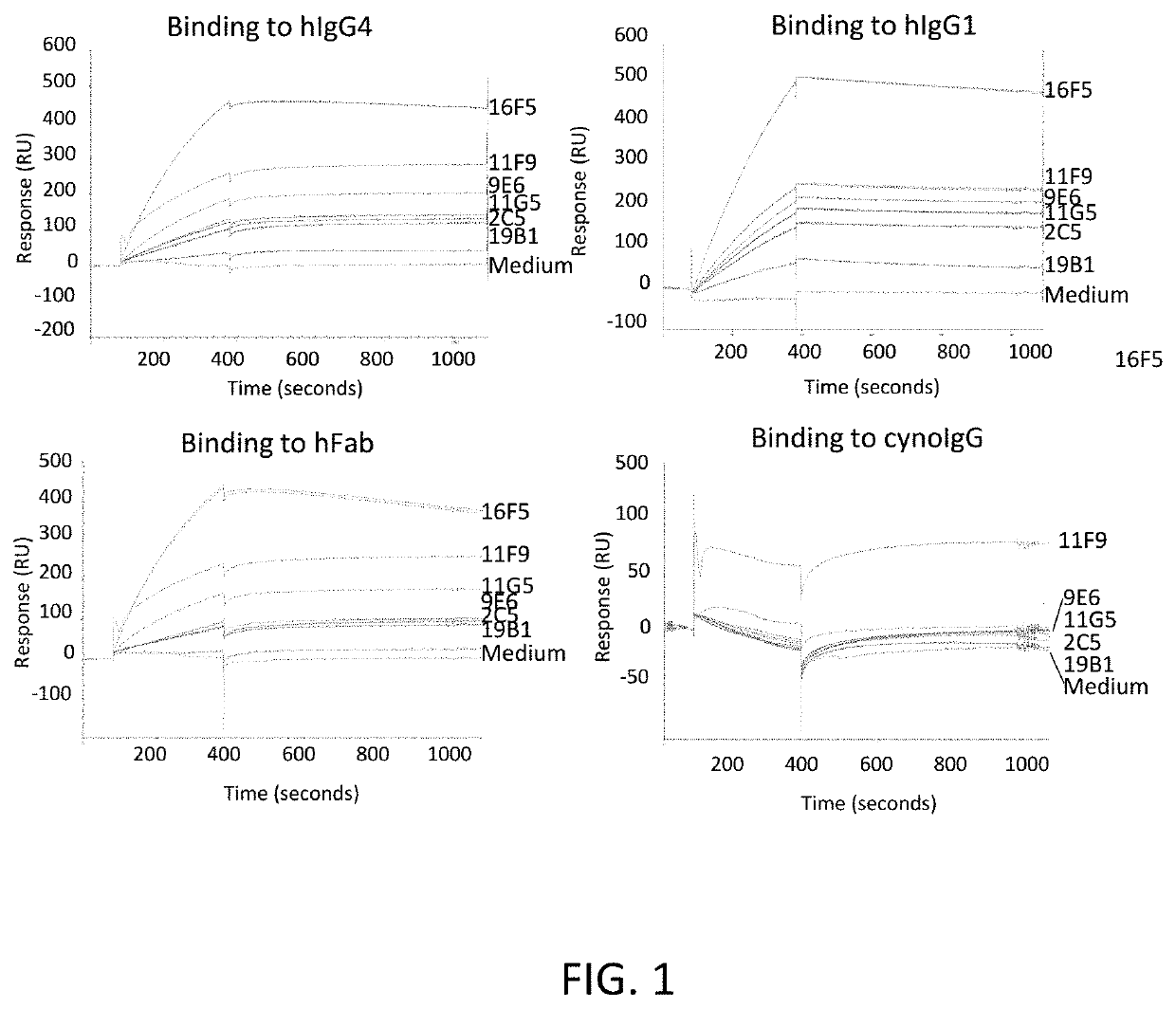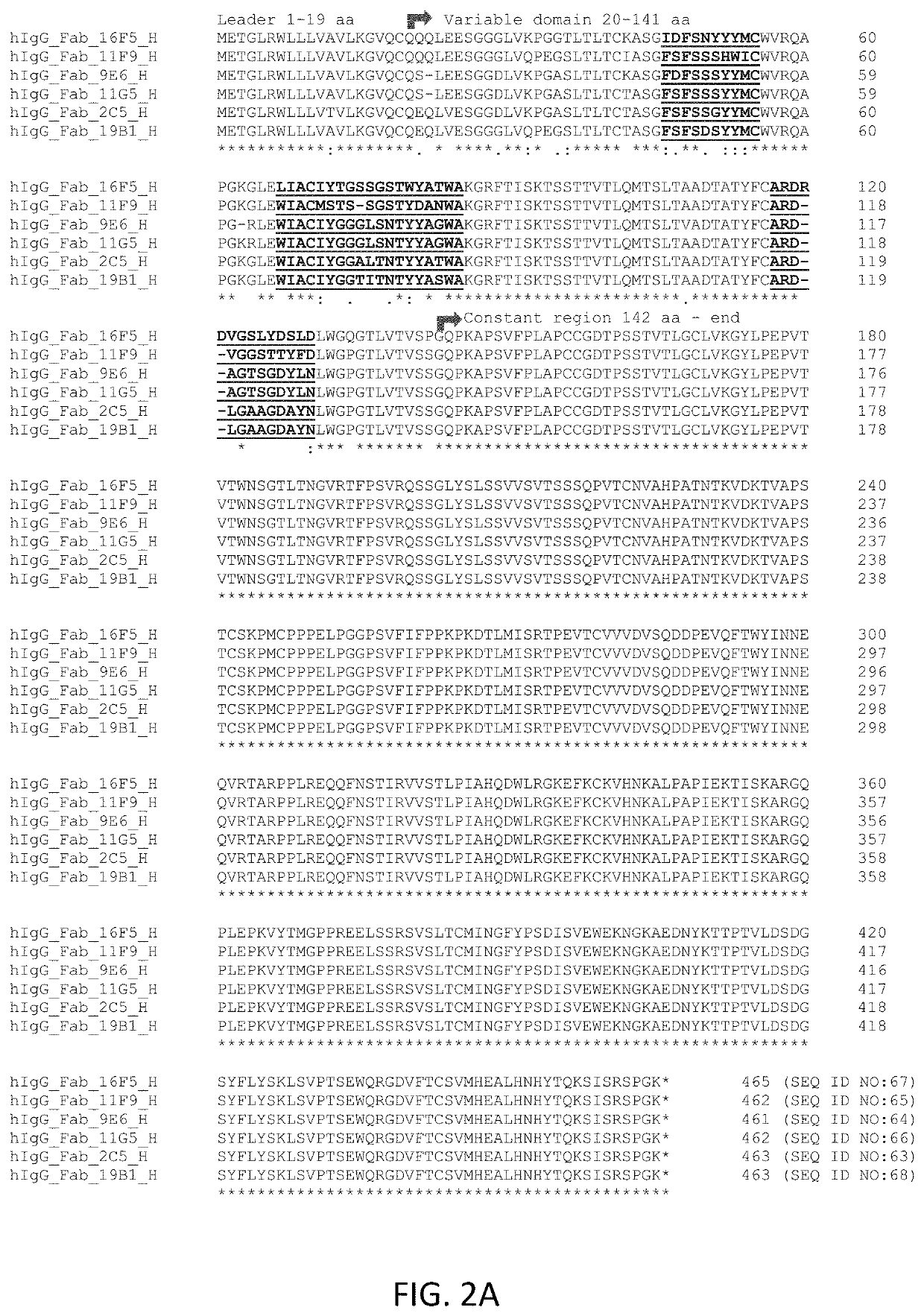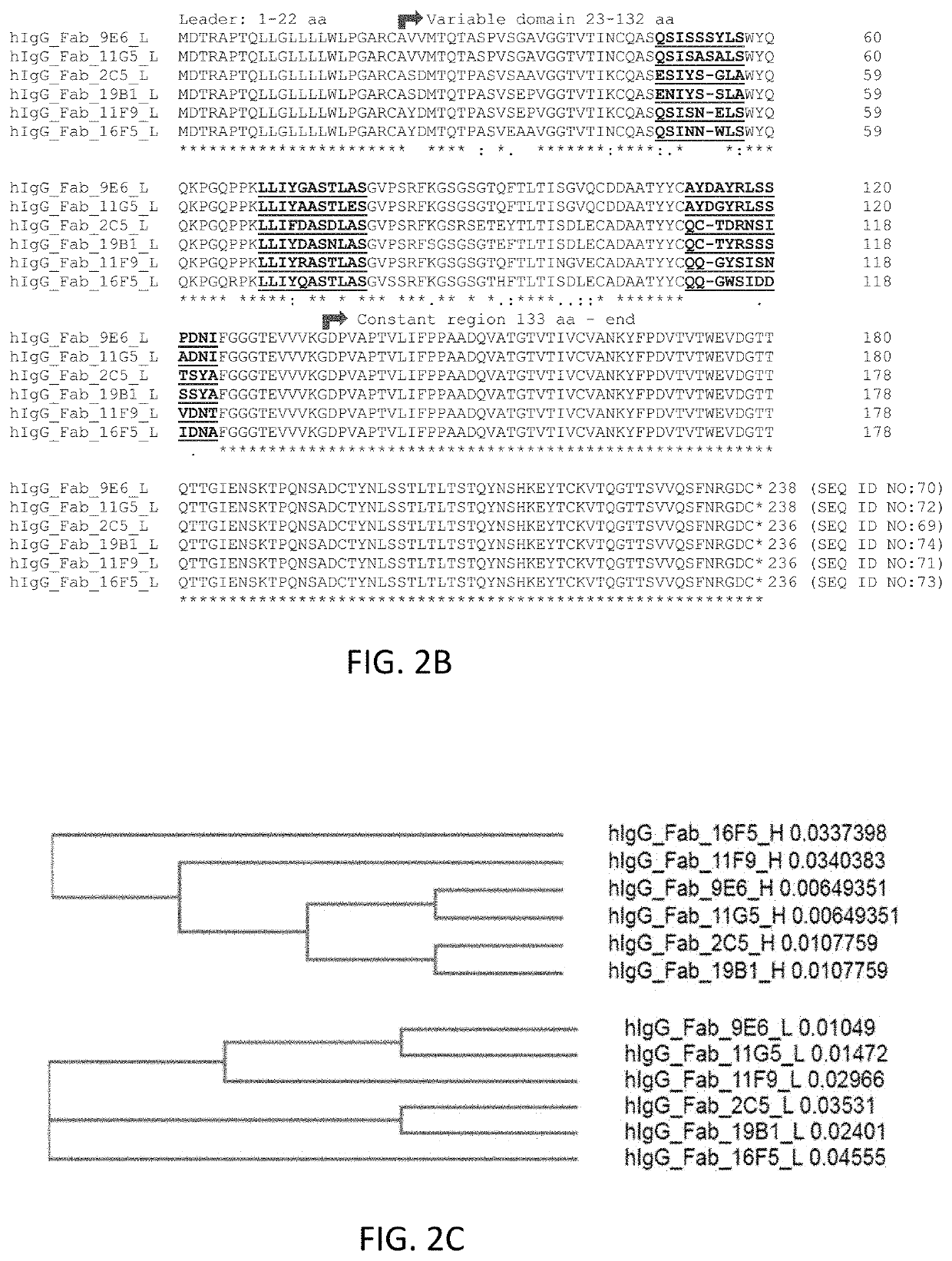Rabbit antibodies to human immunoglobulins g
a technology of human immunoglobulin and antibody, applied in the field of rabbit antibodies to human immunoglobulin, can solve the problems of laborious and time-consuming development of high-quality reagent antibodies
- Summary
- Abstract
- Description
- Claims
- Application Information
AI Technical Summary
Benefits of technology
Problems solved by technology
Method used
Image
Examples
example 1
of Human IgG-Specific Rabbit Antibody Clones
[0073]This example describes experiments in which six rabbit antibody clones recognizing both human IgG and Fab but not cynomolgus monkey IgG were developed using rabbit B-cell cloning technology.
[0074]Although hybridoma screening and display methodologies have been used in rabbit monoclonal antibody development, they both have some drawbacks: the hybridoma technology has a low efficiency of cell fusion, while display method results in the loss of natural cognate pairing of heavy and light chain (Zhang et al., Front Immunol. (2017) 8:494). To overcome these issues, a single B cell-based antibody gene cloning technology (or single B cell cloning) has been developed recently (Seeber et al., PLoS ONE (2014) 9:e86184; Rashidian et al., “Single B Cell Cloning and Production of Rabbit Monoclonal Antibodies” in: Zielonka and Krah (eds) Genotype Phenotype Coupling. Methods in Molecular Biology, vol 2070, Humana, New York, N.Y., 2020).
[0075]Briefly...
example 2
of Rabbit Anti-hIgG Antibodies
[0079]In order to determine the uniqueness of the six clones, heavy and light chain PCR products were subjected to DNA sequencing. The deduced amino acid sequences of the variable regions for the heavy and light chains, respectively, were aligned using the EMBL-EBI web based Clustal Omega (Sievers et al., Mol Syst Biol. (2011) 7:539). As shown in FIGS. 2A and 2B, all six clones possess unique amino acid sequences for both heavy and light chains. The phylogenetic trees, based on Clustal Omega, were constructed to visualize relative distances (FIG. 2C). Notably, clone 16F5 is highly divergent from other five clones in both heavy and light chains, whereas clone 11F9 is the next divergent clone in the heavy chain but not in the light chain.
[0080]Table 3 shows the nucleotide sequences encoding antibodies 205, 9E6, 11F9, 11 G5, 16F5, and 191B1 (SEQ: SEQ ID NO).
TABLE 3Nucleotide sequences of exemplary mAbsAb ChainNucleotide Sequence (5′ to 3′)SEQ2C5 HATGGAGACT...
example 3
ffinity and Epitope of the Rabbit Anti-hIgG Antibodies
[0085]The amplified PCR products containing the heavy and light chain antibody coding sequences were cloned into expression vectors and used for transient transfection and antibody purification. Using amine coupling, a mouse anti-rabbit mAb was directly immobilized on CM5 chip (Chu et al., Sci Rep. (2015) 4:7360). The purified rabbit mAb clones were then injected, followed by flow over 1:2 serially diluted hFab, hIgG1, hIgG4 and cynoIgG, ranging from 80-0 nM.
[0086]As illustrated in Table 8, all the clones exhibited a binding affinity (KD) greater than sub-nanomolar to the hIgG1, hIgG4 and hFab, but not to cynoIgG. Under the same conditions, the control commercial clone MCA5748G (Bio-Rad, Hercules, Calif.), however, was able to bind to hIgG1 and hIgG4, but not hFab and cynoIgG.
TABLE 8Biacore kinetics of binding of rabbit mAb clones to different antibody typesSampleAntigenka (1 / Ms)kd (1 / s)KD (M)11F9hFab2.97E+073.34E−021.12E−09hIgG4...
PUM
| Property | Measurement | Unit |
|---|---|---|
| dissociation constant | aaaaa | aaaaa |
| dissociation constant | aaaaa | aaaaa |
| dissociation constant | aaaaa | aaaaa |
Abstract
Description
Claims
Application Information
 Login to View More
Login to View More - R&D
- Intellectual Property
- Life Sciences
- Materials
- Tech Scout
- Unparalleled Data Quality
- Higher Quality Content
- 60% Fewer Hallucinations
Browse by: Latest US Patents, China's latest patents, Technical Efficacy Thesaurus, Application Domain, Technology Topic, Popular Technical Reports.
© 2025 PatSnap. All rights reserved.Legal|Privacy policy|Modern Slavery Act Transparency Statement|Sitemap|About US| Contact US: help@patsnap.com



